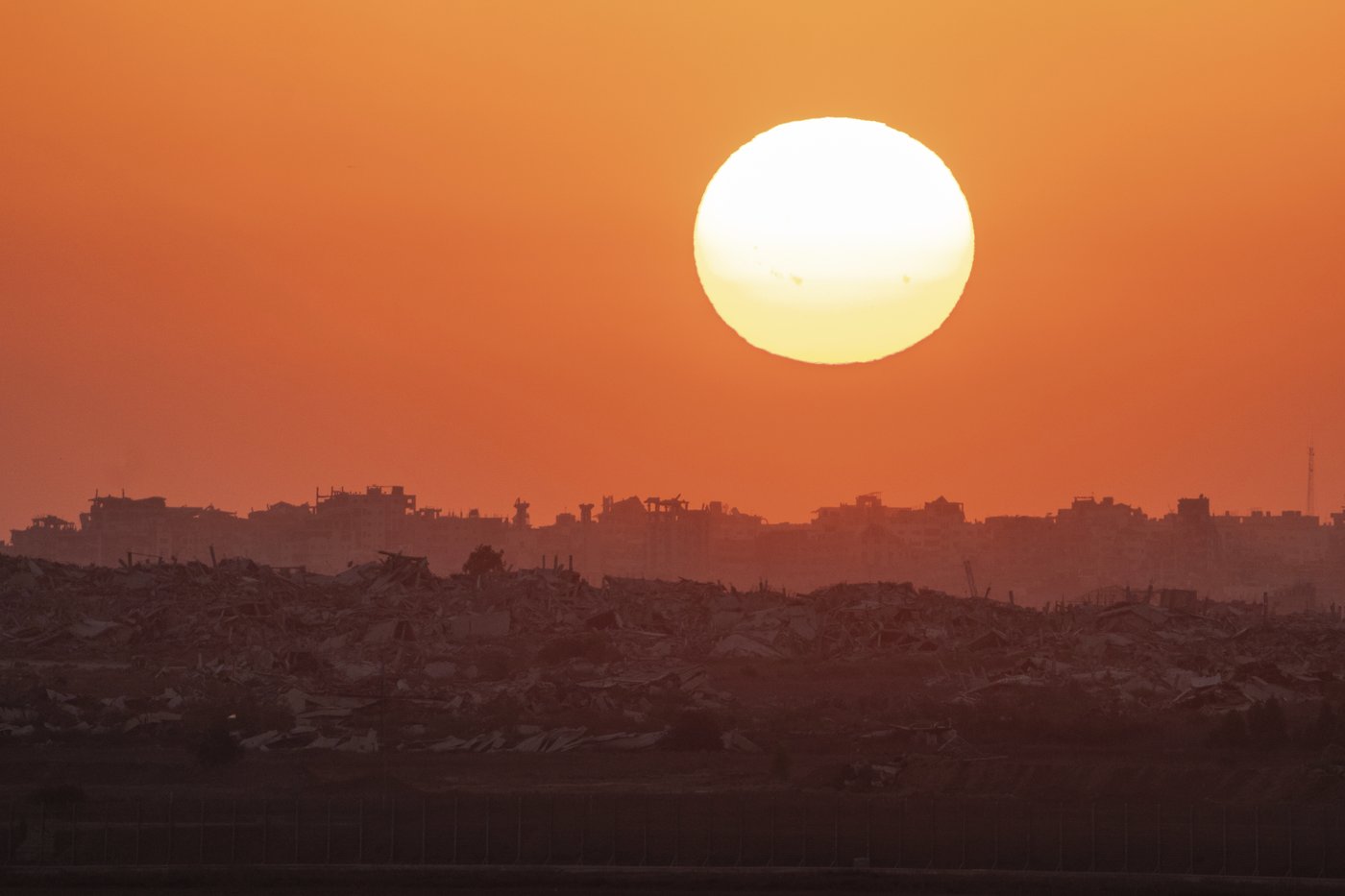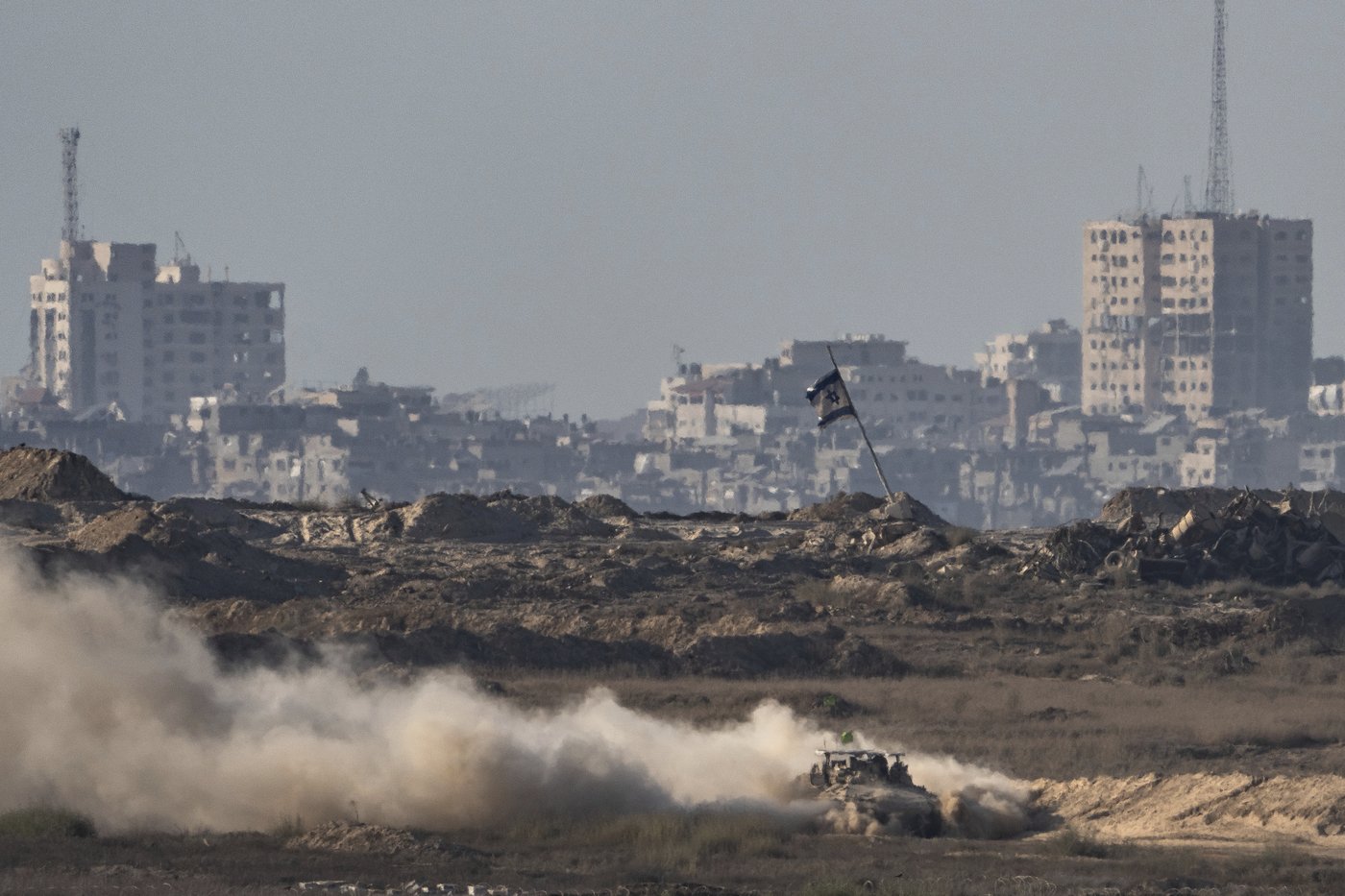
Israel declares Gaza’s largest city a combat zone as death toll surpasses 63,000
GAZA CITY, Gaza Strip (AP) — Israel declared Gaza’s largest city a combat zone and recovered the remains of two hostages on Friday as the army launched the start of a planned offensive that has drawn international condemnation.
As the military announced the resumption of fighting, health officials said the death toll in Gaza has risen to 63,025, with 59 deaths reported by hospitals over the last 24 hours. Aid groups and a church sheltering people said they would stay in Gaza City, refusing to abandon the hungry and displaced.
The shift comes weeks after Israel first announced plans to widen its offensive in the city, where hundreds of thousands are sheltering while enduring famine. In recent days, the military has ramped up strikes on the city’s outskirts.
Plumes of smoke and thunderous blasts could be seen and heard across the border in southern Israel on Friday morning.
Israel has called Gaza City a Hamas stronghold, alleging that a network of tunnels remain in use despite several previous large-scale raids on the area throughout nearly 23 months of war.
Prime Minister Benjamin Netanyahu has said that Israel needs to cripple Hamas’ capabilities in the city to avoid a repeat of the Oct. 7, 2023, attack that ignited the war.
While United Nations agencies and aid groups condemned the offensive, people in Gaza City said it made little difference.
“The massacres never stopped, even during the humanitarian pauses,” resident Mohamed Aboul Hadi said in a text message from Gaza City.
Some who fled south were putting together tents Friday in the central Gaza Strip, west of the Nuseirat refugee camp. They spoke of the miserable conditions they have endured.
“We are thrown in the streets like, what would I say? Like dogs? We are not like dogs. Dogs are better than us,” said Mohammed Maarouf standing in front of a shelter for him and his family of nine.
More than 63,000 Palestinians have been killed since the war started, the Gaza Health Ministry said Friday. The ministry’s count — 63,025 — does not distinguish between fighters and civilians. It also said five people had died from malnutrition-related causes over the past 24 hours, raising the toll to 322, including 121 children, since the war began.
The ministry is part of the Hamas-run government and staffed by medical professionals. The U.N. and independent experts consider it the most reliable source on war casualties. Israel disputes its figures but has not provided its own.
Some refuse to leave as Gaza City assault begins
Facing international criticism, Israel instituted what it called “tactical pauses” in Gaza City and two other populated areas last month. That paused fighting from 10 a.m. to 8 p.m. to allow more aid to get through, though aid groups have said deliveries remained challenging due to blockade, looting and Israeli restrictions.
Midday Friday, the military changed course, marking the latest escalation after weeks of preparatory strikes in some of the city’s neighborhoods and calling up tens of thousands of reservists.
“We will intensify our strikes until we bring back all the kidnapped hostages and dismantle Hamas,” said Israeli army spokesperson Avichay Adraee, who urged Palestinians in Gaza City to flee south, calling evacuation “inevitable.”
Hundreds of residents began that journey on Friday, piling their few remaining possessions onto pickup trucks or donkey carts. Many have been forced to leave their homes more than once.
The U.N. said Thursday that 23,000 people had evacuated this past week, but many in Gaza City say there is nowhere safe to go.
“We cannot find any place in the west nor in the south. Conditions are difficult. Where are we going? We don’t know,” said Saddam Yazigi as he prepared to leave.
About 440 people sheltering at the Holy Family Church of Gaza City planned to remain there, along with clergy assisting them, although the church has few defenses.
“When we feel danger, people get closer to the walls or whatever, it’s more protected,” Farid Jubran told The Associated Press.
The UN’s humanitarian agency also planned to keep its staff and NGOs on the ground.
Aid groups say they weren’t notified
The Israeli military did not say whether it had notified residents or aid groups of its plans to resume daytime fighting before Friday’s 11:30 a.m. announcement.
The Norwegian Refugee Council, which coordinates a coalition of aid groups in Gaza, said it had no advance notice. The U.N. feared the area could lose half of its hospital bed capacity.
“We cannot provide health services to 2 million people besieged in the south,” said Zaher al-Wahidi, a spokesperson for Gaza’s Health Ministry.
The renewed attacks also come a week after the world’s leading food security authority declared a famine in Gaza City.
An Israeli military official said Israel would keep trying to facilitate aid delivery, but offered no details on how they might accomplish that amid the fighting.
“This will have a horrific impact on people already exhausted, malnourished, bereaved, displaced, and deprived of basics needed for survival,” the UN’s humanitarian agency said in a statement.
Remains of hostages recovered
Israel on Friday said its military had recovered the remains of two hostages — Ilan Weiss and another left unnamed.
“We will not rest or be silent until we return all of our hostages home — both the living and the dead,” Netanyahu said.
Abu Obeida, a spokesperson for Hamas’ armed wing, said fighters in Gaza City were ready. He said the group would try to keep the hostages alive, but said fighting is expected in the areas where they are being held.
Weiss, 55, was killed in the attack on Kibbutz Be’eri, one of the communities near Gaza that was stormed on Oct. 7.
For the families, the return of remains brings some closure, but also a reminder of the hostages still being held.
“At least they have closure,” said Rubi Chen, whose son was abducted during the Oct. 7 attack and is believed to be dead. “There are still 49 families waiting to have that closure.”
Nearly 50 of the 251 hostages remain in Gaza, including 20 thought by Israel to be alive. Militants also killed around 1,200 people, mostly civilians, in the Oct. 7 attack. Most of the hostages have been released in ceasefires or other deals.
Israel’s Hostages and Missing Families Forum, which has organized large-scale protests demanding a ceasefire to return the hostages, said Israeli leaders should prioritize a deal to return both the living and the dead.
“We call on the Israeli government to enter negotiations and stay at the table until every last hostage comes home. Time is running out,” it said in a statement.
___
Metz and Frankel reported from Jerusalem. Shlomo Mor in southern Israel, Ibrahim Hazboun in Jerusalem and Menelaos Hadjicostis in Nicosia, Cyprus, contributed to this report.




Join the Conversation!
Want to share your thoughts, add context, or connect with others in your community?
You must be logged in to post a comment.

















